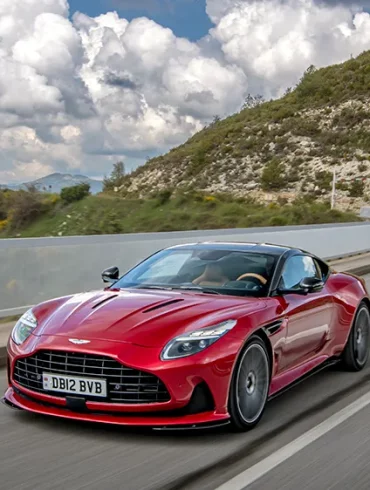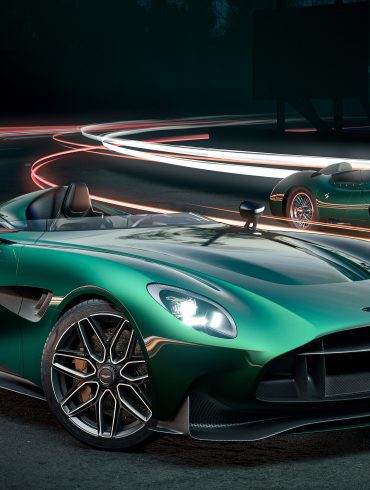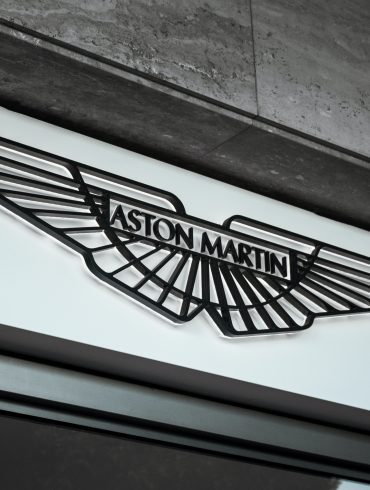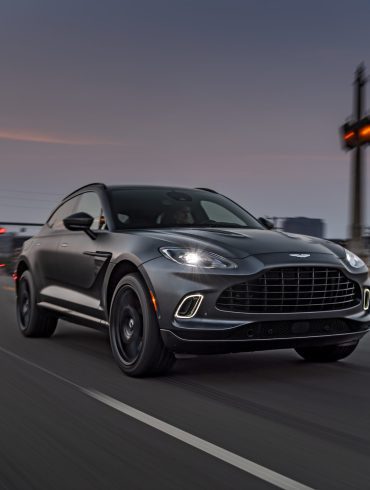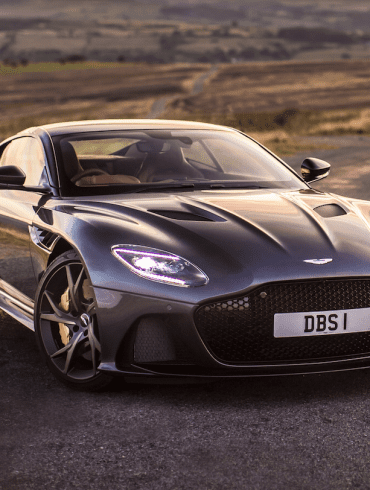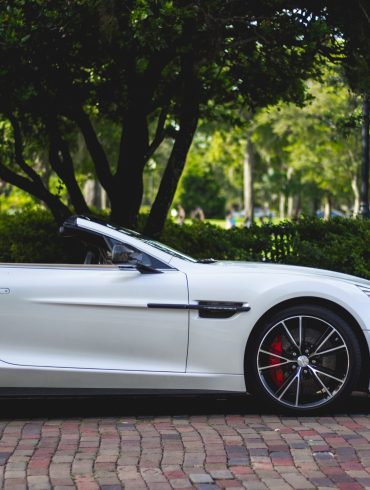Best Aston Martins Ever Made
Updated January 2024 by Eduardo Zepeda
Since its inception in 1913, Aston Martin has been synonymous with British automotive luxury and high performance, and its extraordinary vehicles have won the hearts of automobile enthusiasts worldwide. The exciting roar of Aston Martin engines and the classic beauty of their designs have indelibly influenced the automotive industry. The best works to ever sport the recognizable bird logo are collected here. We will honor the finest examples of Aston Martin automobiles ever produced, each of which is a masterpiece that exemplifies the company's dedication to sophistication and performance.
DB4 / DBS 770 Ultimate / DBR1 / V8 Vantage / Lagonda Series II / Valkyrie / DB7 / One-77 / V12 Vanquish / V8 550 Vantage
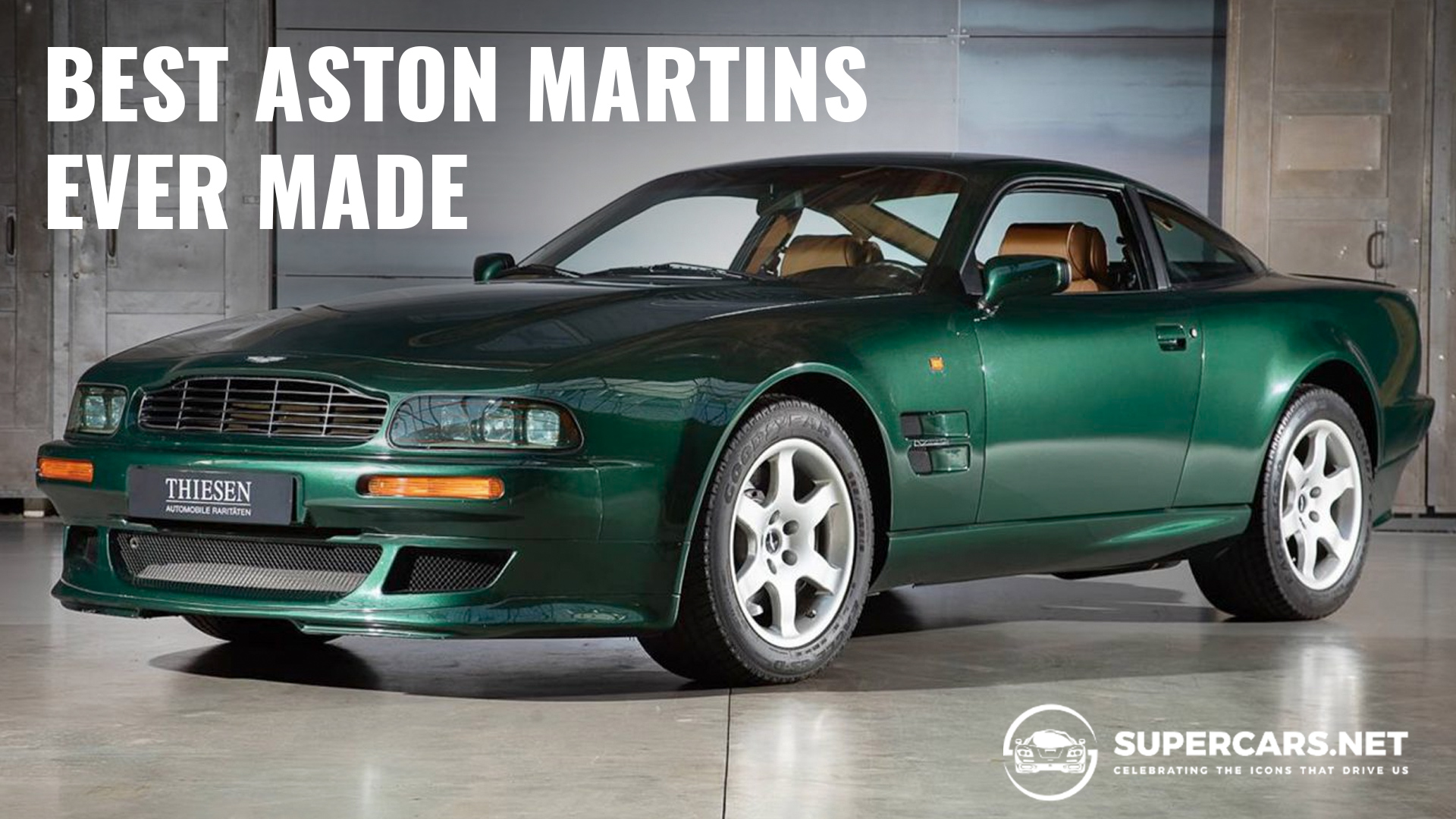
Aston Martin DB4
British masterpiece with Italian flair
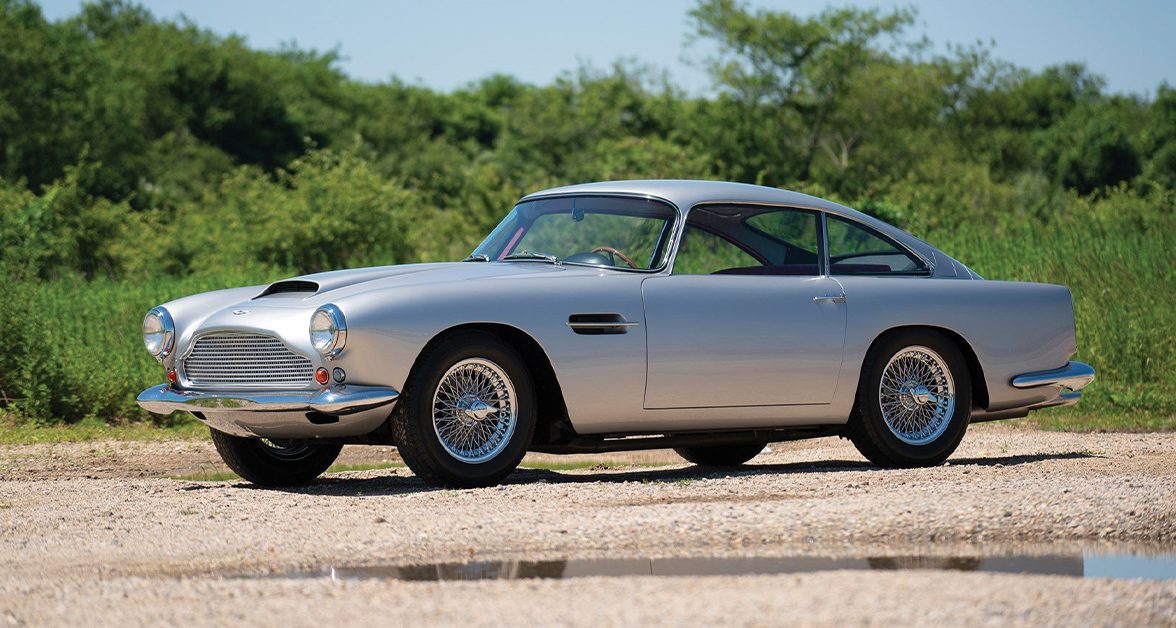
Why We Picked It:
Produced from 1958 to 1961, the Aston Martin DB4 Series One is revered for its groundbreaking design and performance. With its superbly proportioned body and clean, unadorned lines, this British-Italian classic emanated timeless elegance and grace.
It was built by the Milanese firm Carrozzeria Touring, famous for its Superleggera construction technique, using thin aluminum skins stretched over a sturdy steel chassis. The drag coefficient for this vehicle was a measly 0.32.
The DB4's cabin was as luxurious as its exterior. It had various posh extras like electric windows, seats, and a radio and was decked out in high-end materials like leather and wood.
An in-line six-cylinder engine of 3.7 liters provides the Aston Martin DB4 with 233 hp and 245 lb-ft of torque. Its engine allowed it to reach an impressive speed of 145 mph, making it one of the quickest cars of its era. It had a balanced and lively driving experience because of its independent front suspension and live rear axle.
Specifications:
Price: $1,000,000-$2,000,000
Engine: 3.7L Inline-Six
Power: 233 hp
Torque: 245 lb-ft
Transmission: 4-Speed Manual / 3 -Speed Automatic
Curb Weight: 2,884 lbs
Highlights:
The Series I DB4 was outfitted with a gorgeous dashboard handcrafted by Smiths Instruments and adorned with Connolly leather upholstery, Wilton wool carpeting, and other fine materials.
The DB4 Series I sported a distinctive front grille with vertical bars, a signature design element synonymous with Aston Martin's identity.
Learn More:
Aston Martin DB7 770 Ultimate
Exquisite style and intoxicating performance
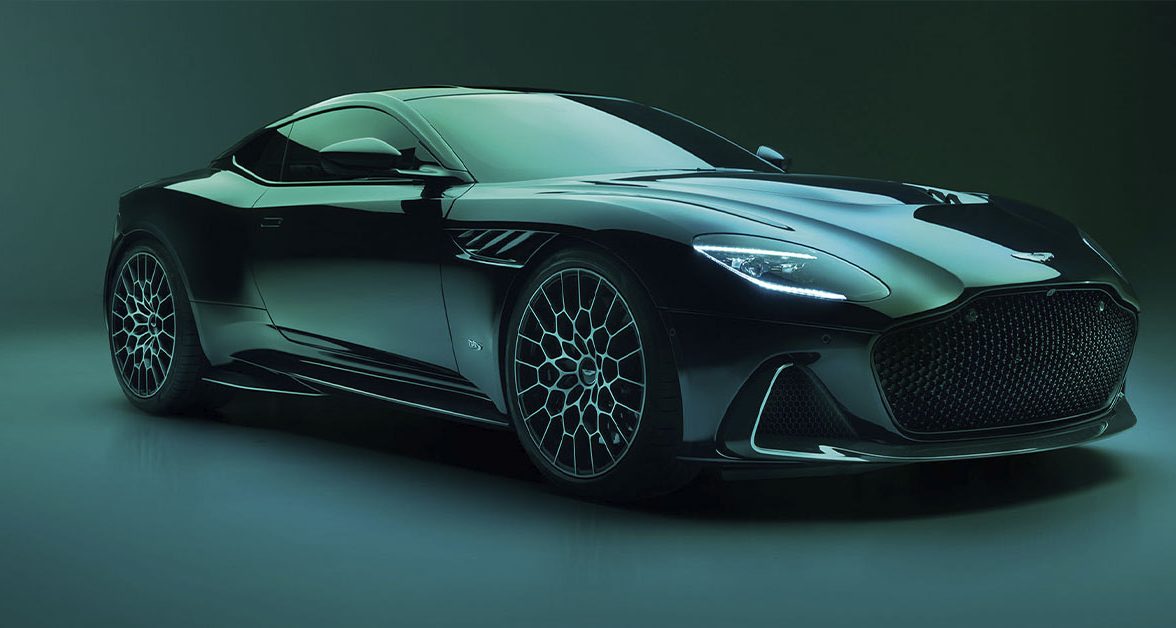
Why We Picked It:
As its name implies, the DBS 770 Ultimate is the company's final V12 model. In honor of this milestone, Aston Martin has released its most powerful and quickest production model. The DBS770 Ultimate is a limited-edition sports car of 499 units in Coupe and Volante variants.
The DBS 770 Ultimate revs its famous 5.2-liter V12 engine to 759 horsepower and 664 pound-feet of torque, allowing it to reach a top speed of 211 mph. A ZF 8-speed automatic transmission sends the engine's output to the rear wheels.
The DBS 770 Ultimate features a redesigned steering column that improves the driver's feel for the road and the behavior of the front tires, allowing for more exact feedback on grip levels.
We increased the front end's stiffness by 25% to ensure the fastest response. The ADS (Adaptive Damping System) has also undergone some refinements.
The evolution of the Aston Martin DBS 770 Ultimate also boasts an innovative design that makes it more attractive and functional. For instance, its shapes provide greater airflow to the radiators, improving thermal management.
Specifications:
Price: $283,000
Engine: 5.2L Twin-Turbocharged V12
Power: 759 hp
Torque: 664 lb-ft
Transmission: 8-Speed Automatic
Curb Weight: 4,067 lbs
Highlights:
Precise tuning of power and torque curves provides a heady cocktail of great response, outstanding in-gear acceleration, and genuine V12 roar, giving the driver a sensation of limitless potential.
With its specially calibrated transmission, the DBS 770 Ultimate provides a more responsive and engaging driving experience.
Learn More:
Aston Martin DBR1
An iconic Le Mans winner
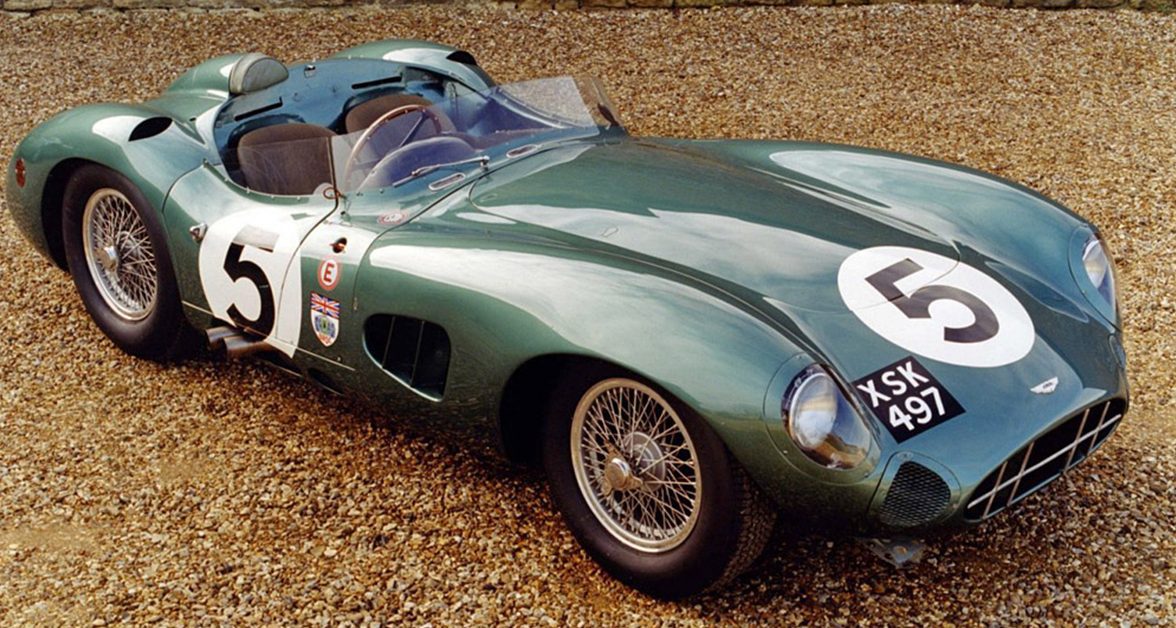
Why We Picked It:
Ten years after purchasing an Aston Martin, David Brown would finally realize his racing dreams by winning the 24-Hours of LeMans when Carol Shelby and Roy Salvadori piloted DBR1/2 to an overall victory.
The DB1, DB2, DB3, and DB3S aided in obtaining the technical expertise, financial backing, and engineering required to develop the DBR1 and LeMans. Like the DB3S, the DBR1 was a dedicated race car with few production Aston Martin similarities. Its space frame chassis, rear transaxle, and engine were all made specifically for it.
The DBR1 was more powerful and lighter than the DB3S. The automobile was 300 pounds lighter, with a longer wheelbase and wider track. A 20-gauge magnesium alloy body, prone to damage on and off the track, is mainly responsible for the weight savings. The suspension and disc brakes from the DB3S were utilized in Ted Cutting's innovative space frame chassis.
The DBR1 relied on a DOHC, six-cylinder engine with a 2.5-liter displacement. Around 254 horsepower was attainable with twin-spark ignition and a lightweight aluminum block. A 5-speed transaxle used to transmit this power to the rear wheels increased the weight on those wheels.
Specifications:
Price: $22,500,000
Engine: 2.5L Inline-Six
Power: 254 hp
Torque: N/A
Transmission: 5-Speed Transaxle
Curb Weight: 1,764 lbs
Highlights:
The DBR1 was one of its era's fastest and most powerful sports cars, allowing a 0–60 mph time of just under 5 seconds and a top speed of over 160 mph.
The DBR1 was also one of the best-handling sports cars of its time. Its lightweight aluminum body and independent suspension system gave it incredible grip and agility.
Learn More:
Aston Martin V8 Vantage
A proper British muscle car
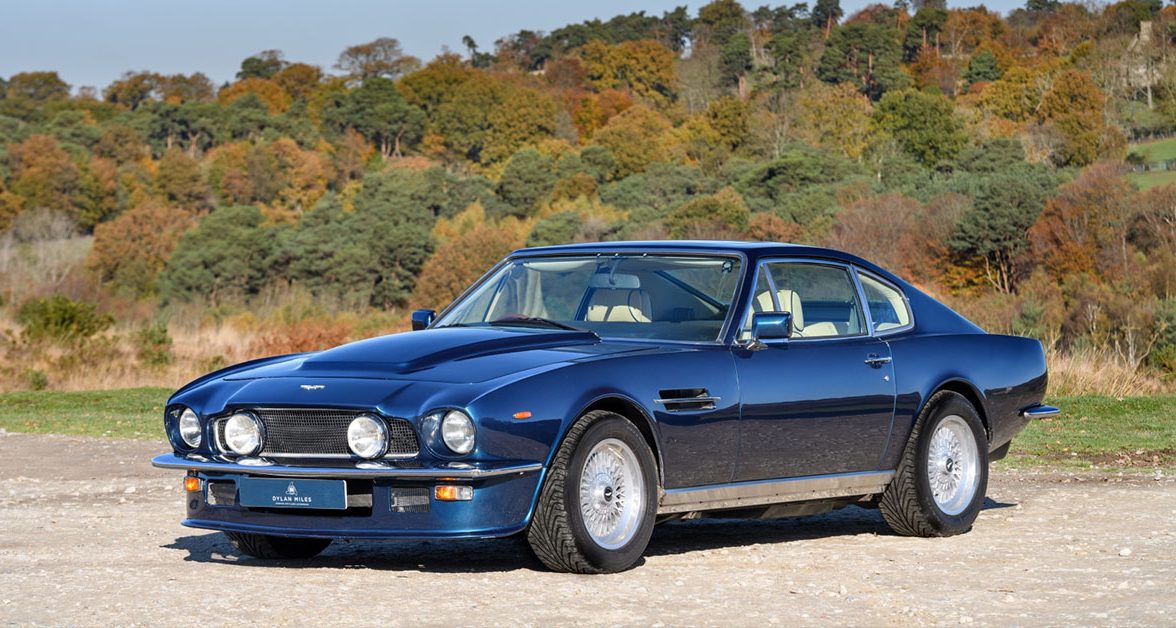
Why We Picked It:
The Aston Martin V8 Vantage, produced from 1977 to 1989, is a one-of-a-kind classic. The Aston Martin crew, as a whole, deserves credit for this high-performance sports car.
The V8 Vantage's imposing appearance resulted from its aggressive and muscular design. It made a solid and confident statement on the road thanks to its prominent grille, imposing headlights, and flared wheel arches. The V8 engine, which proved to be reasonably reliable and robust, had space for a significant improvement in terms of production.
Modifications to the camshafts, air box, inlet valves, carburetors, manifolds, and spark plugs resulted in a 40% increase in power and a 10% increase in torque. A similar ZF manual transmission was standard on the Vantage V8 Saloon. As a result, it reached speeds of up to 170 mph and accelerated from 0 to 60 mph in just 5.3 seconds.
The V8 Vantage continued Aston Martin's history of producing high-performance grand tourers, following in the footsteps of such classics as the DB5 and DB6. As a result, Aston Martin became well-recognized as the maker of high-performance and technically advanced sports cars.
Specifications:
Price: $85,000-$165,000
Engine: 5.3L V8
Power: 390 hp
Torque: 406 lb-ft
Transmission: 5-Speed Manual
Curb Weight: 4,000 lbs
Highlights:
The interior of the V8 Vantage was designed with a no-nonsense approach, emphasizing driver-focused controls and a clean, functional layout to enhance the driving experience rather than excessive luxury.
Despite its typical front-engine/rear-drive arrangement and four seats, the Vantage was deemed superior to the Lamborghini Countach, Ferrari 512BB, and Porsche 911 Turbo in contemporary road tests.
Learn More:
Aston Martin Lagonda Series II
A quirky luxury sedan
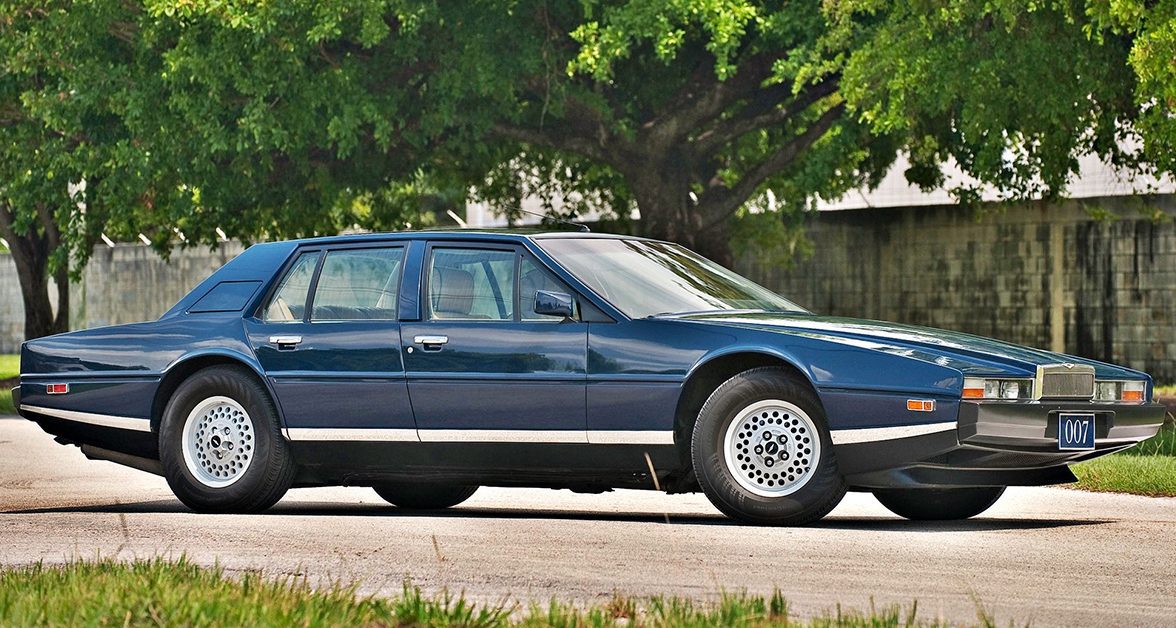
Why We Picked It:
Regarding high-end luxury cars, the Lagonda Series II holds a special place in Aston Martin's history. This exceptional vehicle, manufactured between 1976 and 1985, embodied luxury and innovation, showcasing the craftsmanship for which Aston Martin is known.
The Lagonda Series II was a feat of design, boasting an aerodynamic body constructed from handcrafted aluminum panels. Its extended, low profile and pop-up headlights made it easily recognizable on the road. Stepping inside the Lagonda Series II would greet you with a cabin that rivaled the luxury saloons of its time.
The interior exuded lavishness with plush leather upholstery, exquisite wood veneer accents, and cutting-edge electronic features that set a benchmark for luxury. What truly distinguished the Series II Lagonda was its instrumentation—an advanced technology.
The car boasted a dashboard with touch-sensitive controls, a digital speedometer display, and even a trip computer. Underneath its hood resided a 5.3-liter V8 engine that delivered power to propel its occupants from 0 to 60 mph in approximately 8 seconds.
Specifications:
Price: $60,000-$100,000
Engine: 5.3L V8
Power: 280 hp
Torque: 360 lb-ft
Transmission: 5-Speed Manual / 5-Speed Automatic
Curb Weight: 4,460 lbs
Highlights:
While the production numbers were limited, and the Series II Lagonda was not without its technical challenges, it remains an iconic representation of Aston Martin's commitment to pushing boundaries in design and technology.
Today, the Lagonda is a sought-after collector's item, a testament to the timeless allure of the Aston Martin Lagonda Series II.
Learn More:
Aston Martin Valkyrie
A road-legal F1 hypercar
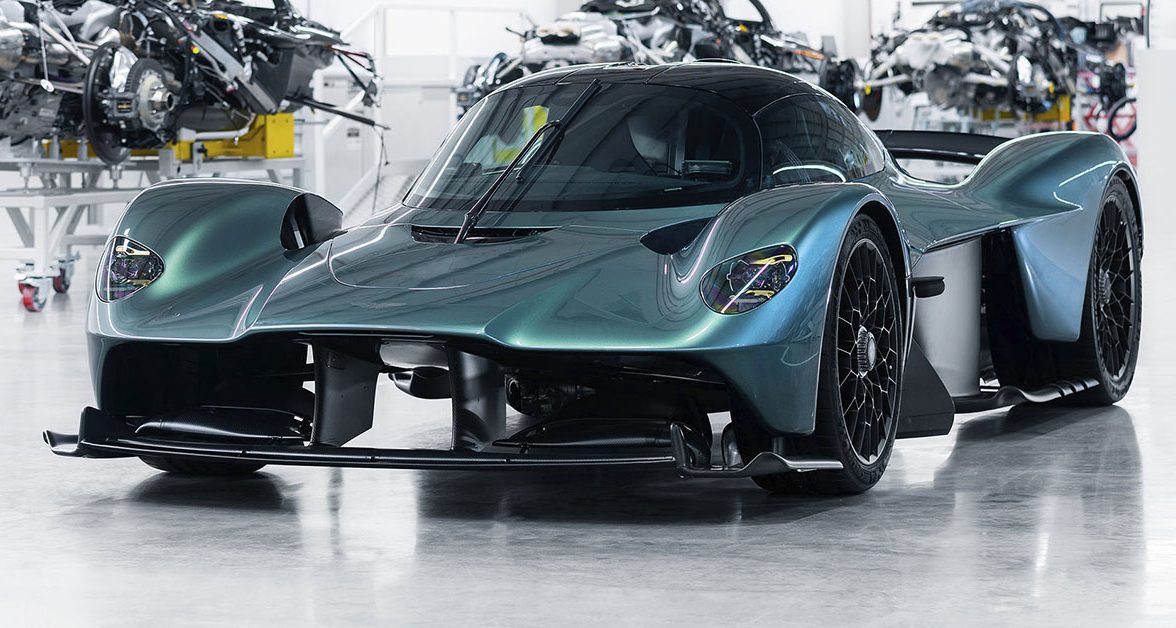
Why We Picked It:
When Aston Martin set out to produce the Valkyrie, legendary F1 designer Adrian Newie's brainchild, their goal was to build a hypercar that was both a technological marvel and a design masterpiece. Therefore, in 2013, Adrian Newey, the Red Bull Formula One team, and Aston Martin joined forces to create the Valkyrie.
The Valkyrie's engine is a naturally aspirated Cosworth-sourced V12, producing 1000 horsepower and 546 pound-feet of torque. The hybrid system boosts the power by 140 horses, bringing the total to 1160 horsepower and 682 lb-ft of torque.
Although some powertrain options were available for the Valkyrie, such as a twin-turbo V6, Newey settled for the naturally aspirated V12 because it had lower cooling requirements. Additionally, the V6's sound appeal would always be inferior to that of the V12. While Aston Martin wanted the One-77's V12, Newey required a custom Cosworth engine.
To determine whether or not the V12 was feasible, Cosworth first developed a three-cylinder prototype. The result was a hypercar with an impressive performance that complies with regulations worldwide to make it street-legal.
Specifications:
Price: $3,500,000
Engine: 6.5L V12 + AC Motor
Power: 1140 hp
Torque: 682 lb-ft
Transmission: 7-Speed Automated Manual
Curb Weight: 2,850 lbs
Highlights:
The Valkyrie is one of the fastest and most powerful cars ever built. The Valkyrie has a 0-60 mph time of just under 3 seconds and a top speed of over 200 mph.
The Valkyrie is one of the best-handling cars ever built. It has a lightweight carbon fiber body and an advanced suspension system that gives it incredible grip and agility.
Learn More:
Aston Martin DB7
Timeless sophistication
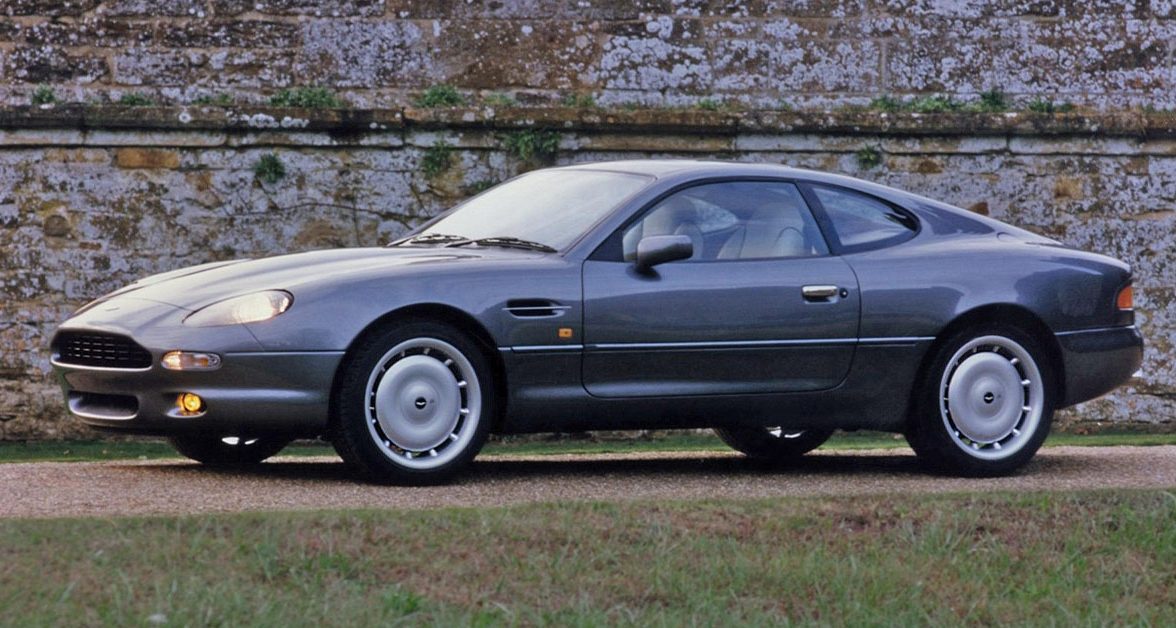
Why We Picked It:
As a more compact alternative to the V8 Vantages, Ford Motor Company commissioned Tom Walkinshaw Racing to design the DB7 on its behalf. TWR was responsible for producing the first conventional steel-bodied Aston Martin, using components sourced from Jaguar and Ford.
Ian Callum and Keith Helfet designed the overall design, and the Jaguar XK8 of the first generation served as their inspiration. In addition, TWR was responsible for developing the in-line six-cylinder engine that had a displacement of 3.2 liters and produced 335 horsepower and 361 lb-ft of torque.
5.9 seconds were needed for the DB7 to go from 0 to 60 mph, and it could reach a maximum speed of 162 mph. Its powerplant was equipped with a Zytec electronic multi-point fuel injection system and a water-cooled Eaton Rootes-Type supercharger.
Aston Martin followed the launch of the Volante convertible in 1996 with the introduction of the Vantage in 1999. The Vantage was a more potent version of the DB7 and featured a 6.0-liter V12 engine capable of producing 420 horsepower.
Specifications:
Price: $25,000–$45,000
Engine: 3.2L Inline-Six
Power: 335 hp
Torque: 361 lb-ft
Transmission: 5-Speed Manual
Curb Weight: 3,889 lbs
Highlights:
Consumers and critics agreed that the DB7 was an excellent product. It was named the "Car of the Year" award by Top Gear magazine in 1994 and was a significant factor in Aston Martin's turnaround in financial fortunes.
The DB7 features the characteristic Aston Martin design language, which includes slick, curving lines, pop-up headlights, and well-balanced proportions.
Learn More:
Aston Martin One-77
One of the most powerful Aston Martins ever
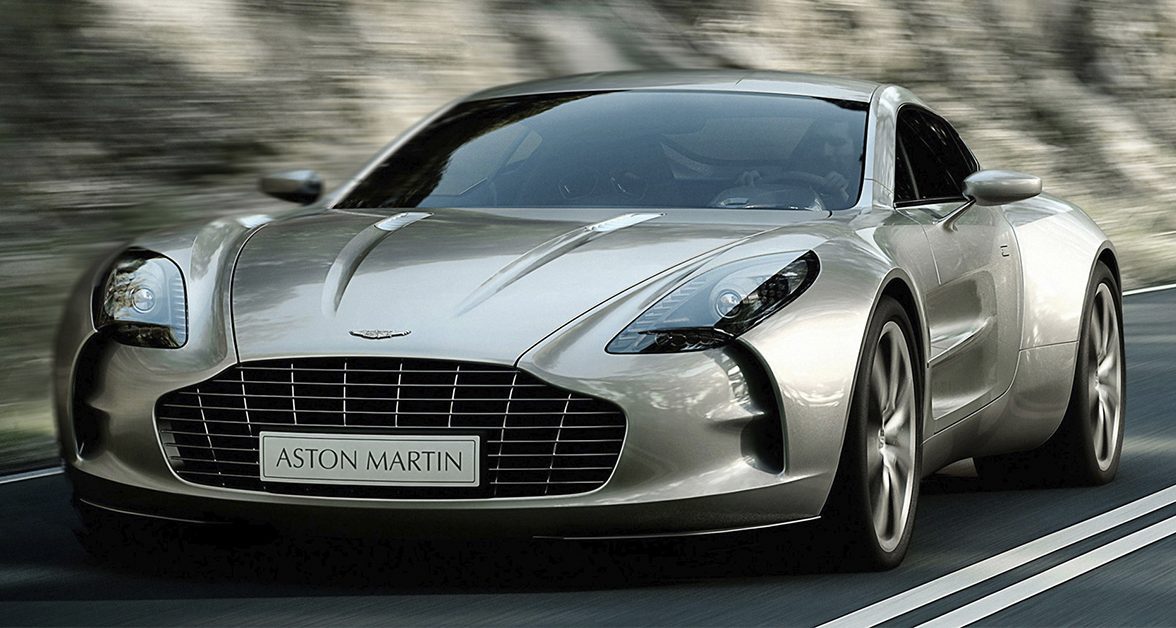
Why We Picked It:
After three years of teasers and prototypes, Aston Martin put the One-77 into production at the beginning of 2011. This entirely hand-built supercar was presented as an alternative to the Bugatti Veyron and represents the pinnacle of what Aston Martin was able to produce.
The One-77 has an aluminum body and a carbon fiber tub from Multimatic of Canada. Cosworth increased the DB9-sourced engine's capacity to 7.3 liters. Aston Martin was now producing the most potent naturally aspirated engine on the market thanks to new cylinder heads created to maximize flow.
Ulrich Bez, the visionary behind the ultimate Aston Martin supercar, collaborated closely with design director Marek Reichman. He asked for a vehicle with 700 horsepower and a weight of less than 1500 kg, using Aston Martin's iconic front engine/rear-wheel drive design.
As part of the development process, the 7.3-liter V12 engine's 750 horsepower and 553 lb-ft of torque were verified, making it the most powerful naturally aspirated road car engine at the time. The One-77's unmatched beauty, subtly aggressive character, and performance surpass any other Aston Martin road car.
Specifications:
Price: $1,600,000–$3,000,000
Engine: 7.3L V12
Power: 750 hp
Torque: 553 lb-ft
Transmission: 6-Speed Automatic
Curb Weight: 3,308 lbs
Highlights:
At the time of its release, the Aston Martin One-77 was the most powerful, naturally aspirated car in the world.
The One-77 is made from lightweight materials, including carbon fiber, aluminum, and magnesium. This makes the car strong and stiff while also keeping it light.
Learn More:
Aston Martin V12 Vanquish
An astonishingly sonorous V12
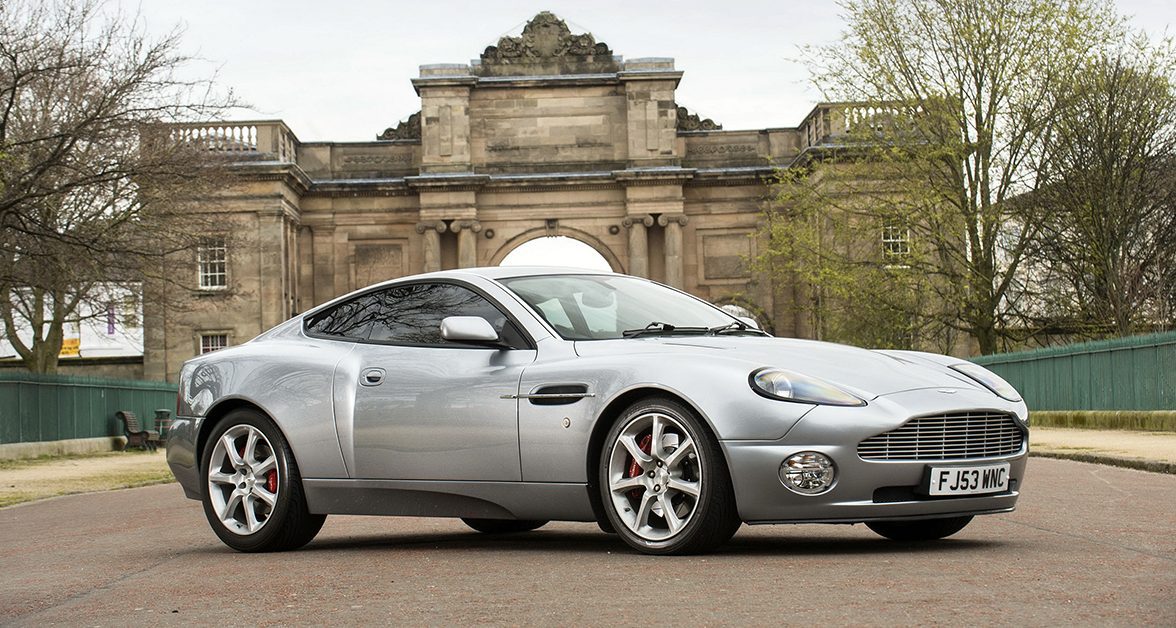
Why We Picked It:
The Aston Martin V12 Vanquish was one of its era's most sophisticated and technologically cutting-edge automobiles. Along with the DB7 Vantage, it was the second model to use a V12 engine.
The Vanquish boasted a design that was both modern and classically beautiful. It became an instant icon thanks to the famed designer Ian Callum's sleek, muscular lines and distinctive Aston Martin grille. The body was crafted from aluminum and carbon fiber, ensuring a lightweight yet strong structure.
Its 5.9 liter DOHC V12 engine with four valves per cylinder produced 460 horsepower and 399 lb-ft of torque. Although the engine shared components with the 3-liter Ford Duratec V6 engine, the parent firm where Aston Martin was merged, the accusations that the Vanquish's V12 had two Ford engines joined from those described above are untrue.
The semi-automatic six-speed sequential gearbox was operated through paddle shifters on the steering wheel to send power to the rear wheels. This transmission received scathing criticism for being sluggish and inefficient. The Aston Martin Vantage could go from 0 to 60 mph in 4.9 seconds and achieve a top speed of 190 mph.
Specifications:
Price: $60,000-$100,000
Engine: 5.9L V12
Power: 460 hp
Torque: 399 lb-ft
Transmission: 6-Speed Sequential
Curb Weight: 3,990 lbs
Highlights:
The 2001 Vanquish incorporated advanced technology, including an automated manual transmission called the "F1-style gearbox." It allowed quick and precise gear changes without a traditional manual clutch pedal.
The interior of the Vanquish featured handcrafted leather upholstery, aluminum trim, and a blend of modern amenities and classic design elements.
Learn More:
Aston Martin V8 550 Vantage
Nineties' supercar killer
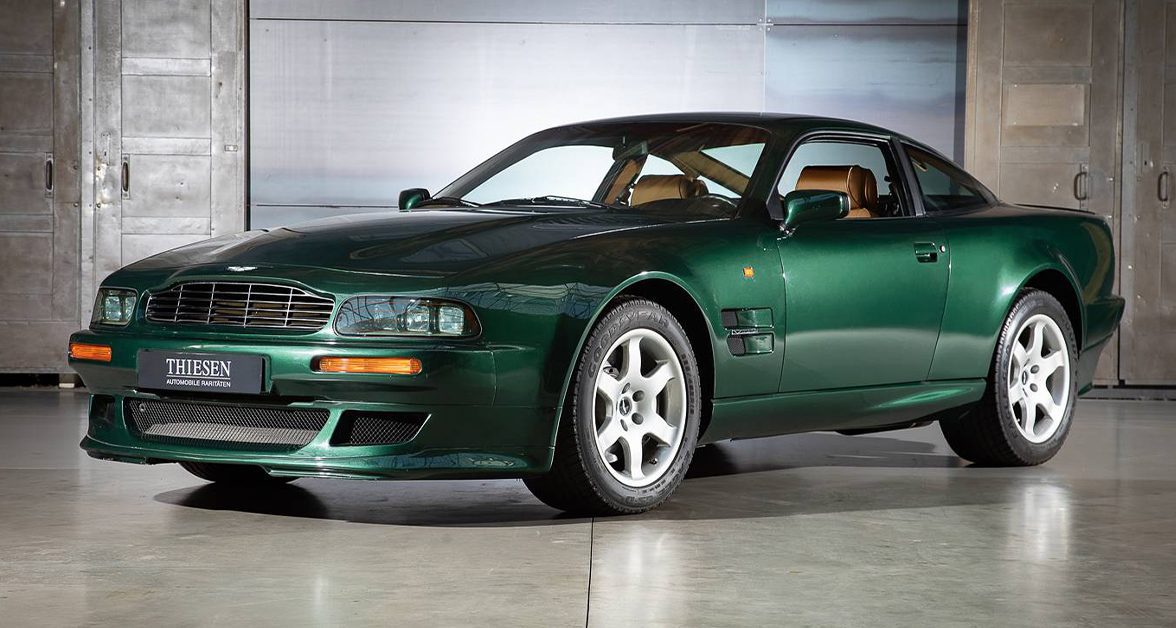
Why We Picked It:
The Aston Martin 550 Vantage, which first hit the market in the early 1990s, has won the hearts of luxury sports car fans ever since.
The Vantage 550 has a contoured hood that conceals a 5.3-liter twin-supercharged V8 engine capable of 550 horsepower. In just over 4 seconds, it can go from 0 to 60 mph when paired with a 6-speed manual transmission.
The Vantage 550 is ideal for maneuverability and stability thanks to its lightweight aluminum chassis and body. It is lightweight (about 3,400 pounds) while providing a solid driving experience.
With its classic good looks, exciting performance, and enduring appeal, the Aston Martin Vantage 550 has become an international icon representing the best of British motoring. There's no other vehicle quite like the Aston Martin 550 Vantage.
It's still highly sought after by collectors because of its status as one of the best sports cars ever made. When asked about his favorite car, Jeremy Clarkson replied, "The Aston Martin V8 Vantage is the best car I've ever driven. It's fast, it's beautiful, and it's incredibly well-engineered."
Specifications:
Price: $80,000-$150,000
Engine: 5.3L Twin-Supercharged V8
Power: 550 hp
Torque: 550 lb-ft
Transmission: 6-Speed Manual
Curb Weight: 4,387 lbs
Highlights:
The 550 Vantage was one of the first Aston Martins designed by Ian Callum, who would later design some of Aston Martin's most iconic cars, such as the DB9 and the Vantage.
The 550 was the first Aston Martin with a twin-supercharged V8 engine. It had 200 horsepower more than a contemporary Porsche Turbo, and only a McLaren F1 was more powerful then. The 550 could beat a Lamborghini Diablo in a drag race.


